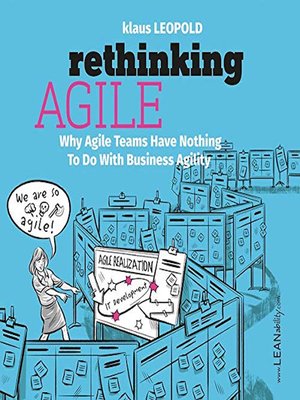Rethinking Agile
audiobook (Unabridged) ∣ Why Agile Teams Have Nothing To Do With Business Agility
By Klaus Leopold

Sign up to save your library
With an OverDrive account, you can save your favorite libraries for at-a-glance information about availability. Find out more about OverDrive accounts.
Find this title in Libby, the library reading app by OverDrive.



Search for a digital library with this title
Title found at these libraries:
| Library Name | Distance |
|---|---|
| Loading... |
You can turn any problem into a mystery. There are now enough agile templates and frameworks to turn any simple insight into a challenge that naturally can only be resolved with this or that method or framework. Yes, I am sitting in a glass house. I make my money giving companies valuable tips and my name is associated with Kanban. However, my goal is to never make things more complicated than what they really are. And a simple insight goes along with this: An agile organization is not created by completely optimizing elements isolated from one another—in most cases this involves teams. Often, though, Agile odysseys start with this local (sub-)optimization, where at the same time their chosen agile method becomes the golden calf. Then the only attempt is to do the method justice rather than asking what creates more value for the customer. Typically, collaboration between the development areas of an organization and the business decision makers isn't taken into consideration.
In this book, combined with the power of illustration, I want to make a clear and meaningful point about this simple insight, which you can neither certify nor trademark. In the past two years, I have gone from conference to conference with my presentation "Why agile teams have nothing to do with business agility". Over and over, I receive feedback from people in the audience about how they have found themselves in the same trials and tribulations during agile transformations.
Hence, this book presumes a fundamental knowledge about agility and the mechanisms behind it. Perhaps your company has just started down the path of becoming agile, or you are already stuck knee-deep in the transformation and are asking yourself what the heck has gone wrong. In this case, you will probably find useful hints in this book. And perhaps while reading this book you will realize something that makes you smile to yourself, which means my goal has been achieved.







